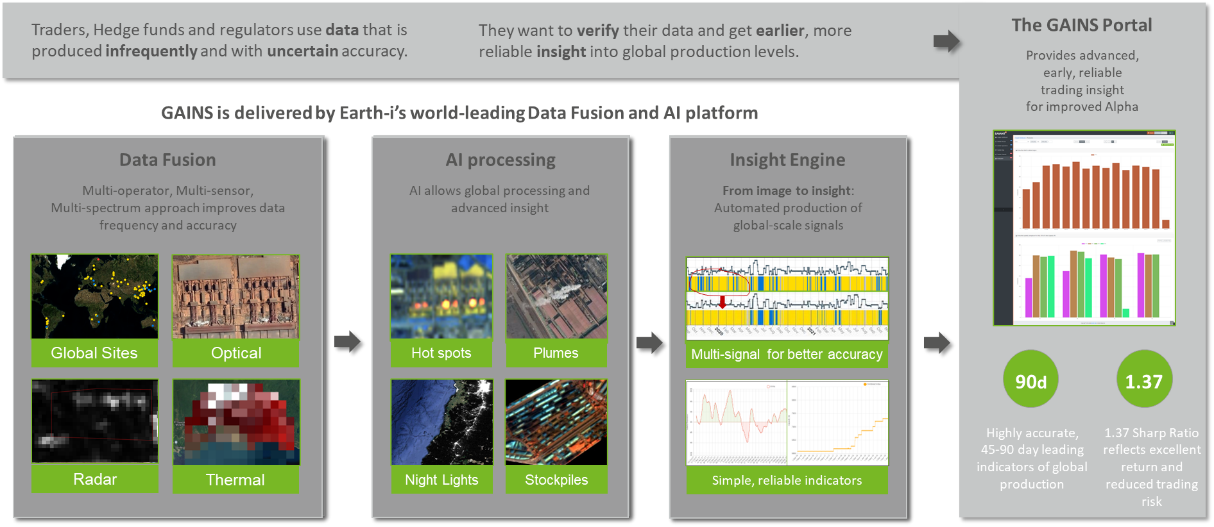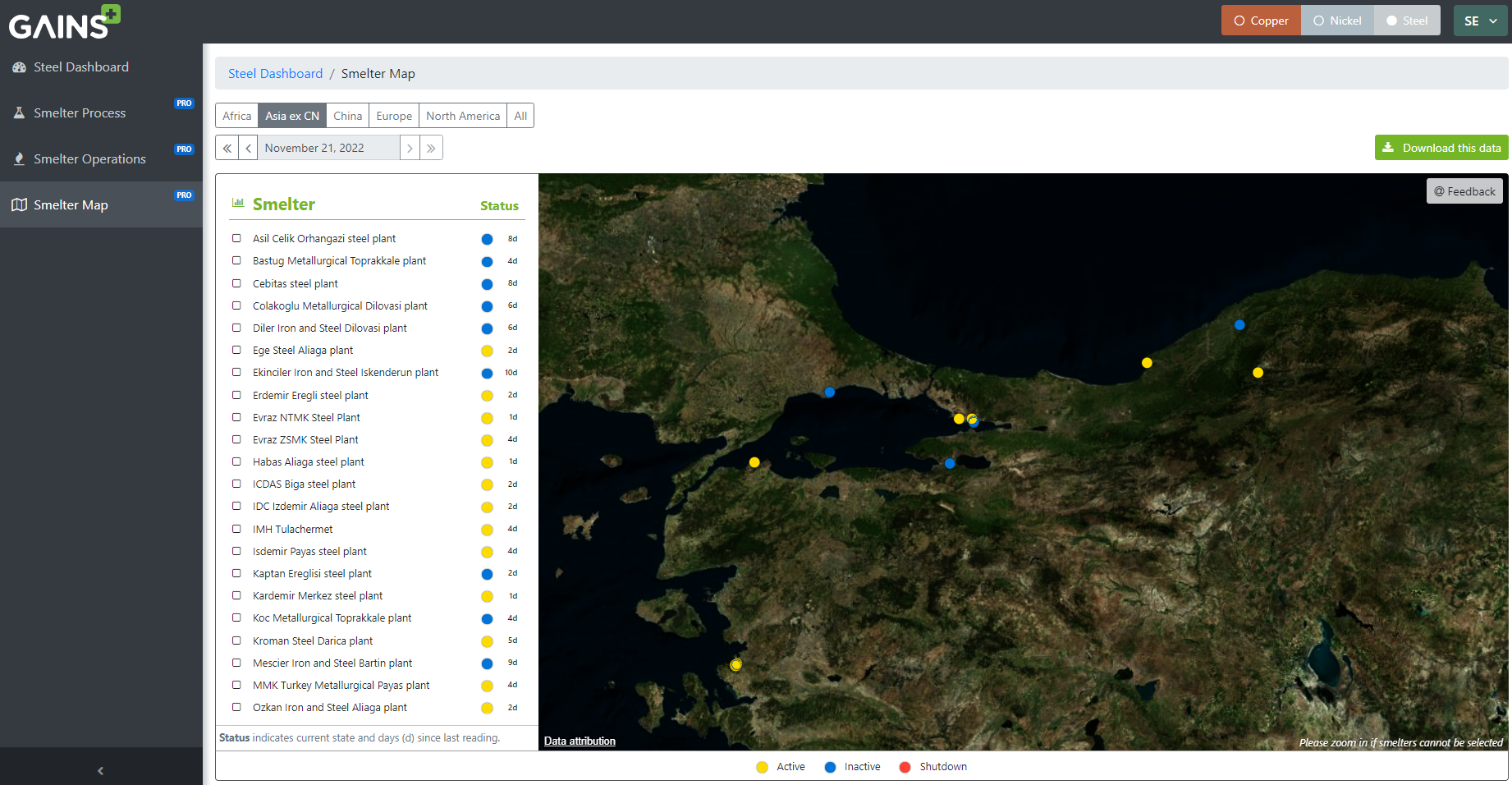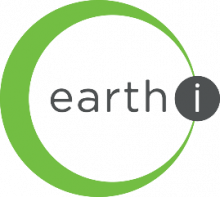
Objectives of the service

The key project objective was to create and deliver “activity index” products tailored to customer requirements with a scale, frequency, accuracy, and price point never seen before. The service would give customers a much-desired competitive edge for trading in goods and commodities.
The activity indices could derive from a variety of types of activity indicators, for example:
-
Monitoring thermal emissions from sites
-
Detection of smoke and exhaust plumes
-
Multi sensor change detection to detect and monitor transportation,
-
Detection and monitoring changes in stockpiles
-
Detection and monitoring changes in holdings of produced material
Users and their needs
For physical, commodity and equity traders and asset owners, GAINS provides activity data down to individual asset performance level. Customers in this segment often have very detailed information relating to assets they have direct commercial interaction with (or own). This allows them to benchmark GAINS data against their own inputs to interpret results for other sites they do not have information on.
For paper and systematic traders, GAINS provides activity data aggregated up to a macro-economic level. This customer segment tends to be less interested in single asset data due to the difficulty in finding investment products with that specific exposure. However, datasets that can provide timely macro-economic insights for an industrial sector are of significant interest to this type of trader.
For market research firms, GAINS will provide an additional data point from which to inform, validate and enrich their research. For market regulators, GAINS provides a means of understanding market movements better, as well as for validating information being reported by operators of industrial sites.
Service/ system concept
The service focuses on providing high-frequency activity indicators of complex supply chains by proactively monitoring and tracking the inferred levels of activity at numerous globally distributed industrial sites.
It focuses on industrial sites that produce tradeable goods and high-value commodities. The inferred activity levels are correlated with complementary data sources such as market trading data and available published data on production from each site, as well as publicly accessible information such as news feeds, company press releases and trading statements. The specific information that will be made available to customers is a temporal graphical plot of the level of activity detected at each industrial site that can be aggregated up at a province, country, regional or global level.
The cloud-based architecture has a serverless model to provide scalability with reduced operational costs. The system imports data of various types and formats, each of which triggers a predefined processing workflow. Each workflow is highly customisable and constructed from a library of functions. This provides the flexibility to create new workflows or modify existing ones. Depending on the workflow executed, the resulting outputs are stored in a database or written to file storage. A user interface permits the search and retrieval of data; advanced customers can use a custom API directly within their own software.
Space Added Value
GAINS implements a mix of very-high, high, medium and low resolution Earth Observation data. The approach is to start with optical satellites and datasets, then gradually expand into other data types such as radar and thermal.
The programme is designed to accommodate future satellite and terrestrial remote sensing sources as they become operational and add new open-source datasets as they become available. Selection of new data sources will be reviewed to provide new or enhanced analytical capabilities or to gap fill existing data supplies to produce and maintain a consistent time-series dataset.
Current Status
The ESA-funded project was successfully completed in Q2 2023, and the GAINS service has entered its commercial operations phase.
Upon project kick-off in Q4 2021, the project team held a number of detailed requirements gathering meetings with potential customers to understand their needs and expectations from the GAINS service, and details were captured within a Requirements Document. In Q1 2022, exploratory proof-of-concept development work was undertaken on key capabilities to underpin the service, focusing on functions such as nightlights monitoring, stockpile monitoring, SAR change detection and stockpile change detection.
This work helped to focus the team’s efforts on two primary areas of system development, looking at global steel smelting operations, and global movements of iron ore for steel production, as the initial products to be developed and trialled with the end users. The steel activity index relies on satellite data that is processed using sophisticated computer vision techniques; while the iron ore index involves machine learning, spectroscopic analysis and volumetric calculations to derive information about stockpiles of iron ore at key seaports.
System development was completed in Q4 2022, and the project team then focused on rolling out and populating the system for key geographies that could be trialled with users. This was a substantial task as there were over 1200 sites relevant to steel production globally, with around 800 of these operational. The system was populated, and the pilot was executed successfully from February to April 2023. Upon completion of the pilot phase, the live operational service was launched in May 2023.
The image below shows a screenshot of the GAINS web user interface.

Prime Contractor(s)
Subcontractor(s)




